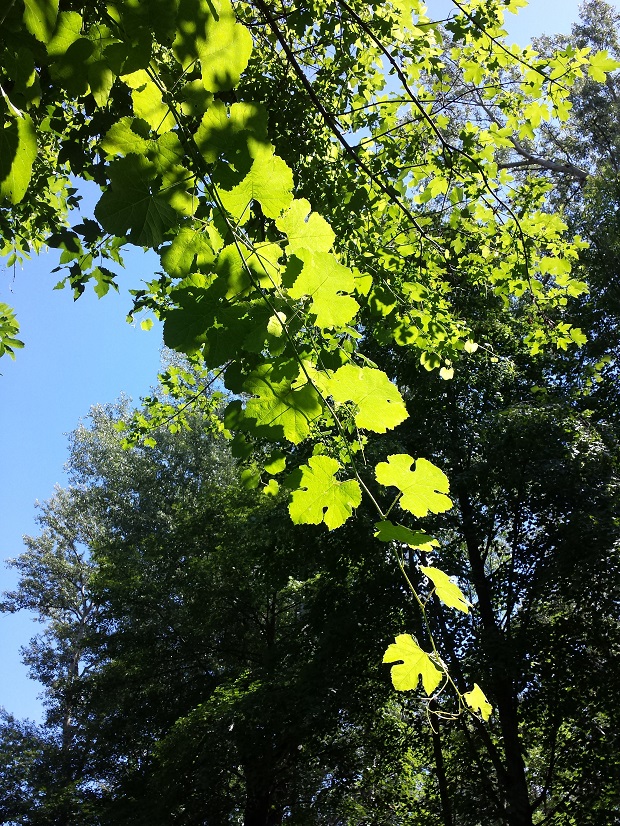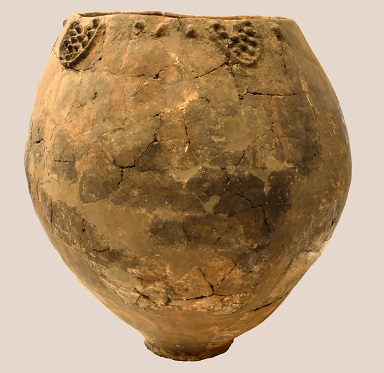The origins of wine
Most wine-related books, blogs, websites, and wine experts will say that wine appears in the Caucasus region, in the actual Georgia.
It is a nice story: the wine appears first in one place and then spreads across the world. But is this what happens? Artifacts were found in the Caucasus region (Today Armenia and Georgia) but, we don’t have any final proof of how and where the wine was first made and grapevine were domesticated.
We know that the grapevine, Vitis vinifera, appeared as a wild plant between Uzbekistan and Western Europe 2.6 million years ago. It was present long before manhood came to the area and before any written records.
But it is still a valid question. How could scientists determine the origins of wine? They make hypotheses and then validate them against artifacts they find, science, and, mostly, genetics.
They are tracking pieces of evidence, artifacts, structures, biofacts, and ecofacts that, when analyzed, can tell stories of the origins of wine.
The Paleolithic hypothesis
Grapevine was present as a wild variety, Vitis Vinifera Sylvestris, in Europe, the Levant, Persia, and the Caucasus. The plant grows as a climbing vine, often found in forested areas where it can attach to trees and shrubs, and it produces small black fruits.

200000 years ago, a little ice age occurred. It has an impact on both the human population and grapevine distribution. Vitis vinifera survived in two distinct areas, from the east of Egypt to the Caucasus and the Atlantic coast of France, Spain, and Portugal.
Human tribes who were present in these areas certainly noticed these black, sweet, and sour fruits. This is the advent of the first hypothesis on the origin of wine; The Paleolithic hypothesis from Professor Patrick McGovern (Ancient Wine, the search for the origins of viniculture).
According to Patrick McGovern, the population certainly used clay jars for food conversion. Putting grapes in a closed jar may have accidentally created wine. The crushed fruits at the bottom of the jar can release juice and yeast present on berry skin could start the fermentation process. This could be how the first wine was made. The taste shouldn’t have been so amazing and could not last for long, but it had alcohol, which for humankind was a huge godsend.
There is little proof to support this hypothesis, except that it is one of the basic ways to make wine, that humans have an affinity with alcohol, and that clay jars were the first containers used by humans 10000 years ago.
The only indirect proof is fossil seeds found across Anatolia (Turkey), that indicates the fruits were not only used for direct consumption.
McGovern also relates a legend about an unknown Persian king. The king used to store grapes in jars. One jar went bad, but someone managed to drink the contents and love them; the legend talks about the birth of wine.
We may not find any preserved pottery containing the rest of organic derivatives to prove the Paleolithic wine hypothesis, but the fact, that at the beginning of the agricultural revolution, humans started to domesticate Vitis vinifera, indicates that a pre-viniculture existed before.
But it is only the use of wild grapes and not domesticated Vitis vinifera. Is it viticulture?
The Neolithic Caucasus Wine
Gathering wild fruits is one thing, but domesticating wild grapevines is more difficult and a step toward viticulture. During the Neolithic, almost 12000 years ago, humankind started one of its first revolutions, the transition from hunting and gathering to agriculture.
Across a vast region in the Middle East, the fertile croissant and later in Eurasia. They turned several different plants into crops by controlling their reproduction.
It is different groups of humans adopting new techniques independently. We should talk about neolithic revolutions instead of a revolution.
Grape wine was one of the wild plants to be domesticated. 11000 years ago, china domesticated table grapes (not for wine). In the Caucasus region, gape was domesticated 9000 years ago. Farmers selected plants with different berry sizes and colors, higher levels of sugar, and seed shapes.
In this last region, Patrick McGovern and his team made a discovery in 2017 in the south of Georgia. On two excavation sites, they discovered several huge jars, around 300L, that may have been used for winemaking.

But before making this conclusion, scientists needed to prove that jars in these two places were used to store wine. After thousands of years, nothings were left, but the clay used to make these jars will have kept a trace of chemical compounds typically found in wine like tartaric, malic, succinic, and citric acids. Patrick McGovern’s team used several chemical analysis processes to identify such chemical markers and found them.
These jars were 6000 years old contained wine and attested to the oldest winemaking practices found in the world. The Caucasus region could be the place of the first wine.
Since this discovery, there was a consensus, that the Caucasus region and Mesopotamia were the places where grapevine was domesticated, and viticulture started.
A genetic discovery that changed the view on how grapevines were domesticated
However, finding artifacts is not the only way to determine the origin of grapevine domestication. There is another way, genetic. Genetics can help to explore the history of animals and plants.
If you do a genetic analysis on platforms like Ancestor or 23 and Me, they will provide a list of your ancestors with the place they lived. This is the way a group of scientists took to find sources of grape wine domestication in a paper published in 2023.
The group selected 2503 domesticated varieties and 1022 wild grapevines and analyzed the DNA. Data indicate that after the Little Ice Age, 200000 years ago, grapevines were separated into two groups: Western Europe and the East (Caucasus, Middle East, and Persia). 56000 years ago, the East group was divided into two groups later: Caucasus, and the Middle East.
Each group has a different genetic evolution. Modern cultivars from Western Europe do not share much genetic material with Middle Eastern or Caucasus varieties. Sauvignon Blanc does not share any genetic material with Caucasus varieties, like Riesling or Chardonnay (descent from Pinot Noir and Gouais Blanc), Merlot has some trace of Caucasian varieties. One exception is the Muscat family, born in the Middle East and later imported into Europe.
The research paper suggests that, like many human inventions during the Neolithic, grapevine domestication didn’t appear in only one place but in several places at different moments. Maybe we will find new artifacts somewhere in Spain or the Balkan, and we will have more insight into the origins of wine. What we can say today, is that the Caucasus was the region where mass production of wine started, but if the population had migrated elsewhere in Europe and the Middle East they may not have taken grapevine with them, and different places have seen the domestication of grapevine giving us the cultivar diversity we know today.
References: